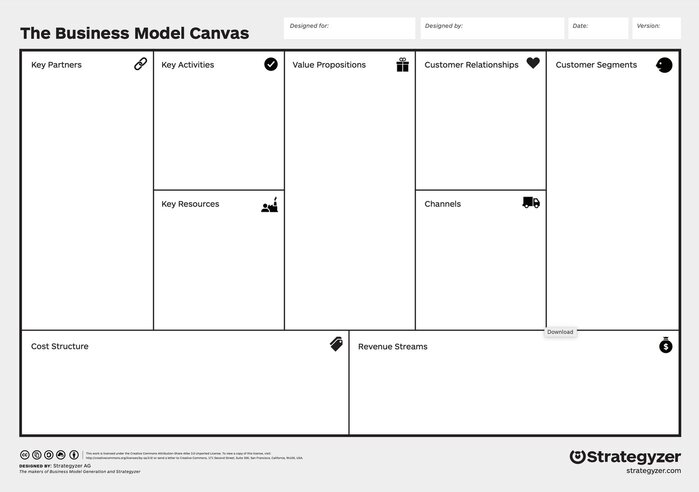At the core of the lean startup methodology is the search for a business model. A lean startup is defined as a temporary organization designed to search for a repeatable and scalable business model. Established companies execute their business model while startups are designed to search for one.
A Startup is a temporary organization designed to search for a repeatable and scalable business model.
The Lean Startup approach relies on “validated learning,” rapid scientific experimentation, as well as a number of counter-intuitive practices that shorten product development cycles, measure actual progress without resorting to vanity metrics, and learn what customers really want.
One of the five principles of the lean startup is validated learning. Most startups start with a series of untested hypotheses (good guesses). The business model canvas is a tool where founders can summarize their hypotheses in a framework.
Validated learning.
Startups exist not just to make stuff, make money, or even serve customers. They exist to learn how to build a sustainable business. This learning can be validated scientifically by running frequent experiments that allow entrepreneurs to test each element of their vision.
The business model canvas is a diagram of how a company creates value for itself and its customers. The business model canvas lets you look at all nine blocks of your business on one page. Each component of the business model contains a series of hypotheses that you need to test.

“The Business Model Canvas visually simplifies the reality of an enterprise with all its processes, structures, and systems.”
The Business Model Canvas is a visual business tool for documenting and developing business models. The visual chart describes a firm’s value proposition, infrastructure, revenue and cost structure, customer relationship and finances. The canvas resembles a painter’s canvas—preformatted with the nine blocks—which allows you to paint pictures of new or existing business models.
The Business Model Canvas provides an organized way to lay out your assumptions about not only the key resources and key activities of your value chain, but also your value proposition, customer relationships, channels, customer segments, cost structures, and revenue streams. It assists companies in aligning their activities by illustrating potential trade-offs by comparing them to one another and being able to see the bigger picture of their overall business framework

The business model canvas template was popularized by Swiss business theorist and entrepreneur Alexander Osterwalder. The canvas is based on his 2005 research work - The Business Model Ontology: A proposition in a design science approach presented at the University of Lausanne in Switzerland.
The nine-building blocks of the business model canvas are:
- Customer Segments
Customer Segments define the different groups of people or organizations an enterprise aims to reach and serve
2. Value Propositions
The value proposition describes the bundle of products and services that create value for a specific Customer Segment. The Value Proposition is the reason why customers turn to one company over another.
3. Channels
The Channels describe how a company communicates with and reaches its Customer Segments to deliver a Value Proposition.
4. Customer Relationships
Customer relationships describe the types of relationships a company establishes with specific Customer Segments.
5. Revenue Streams
The Revenue stream represents the cash a company generates from each Customer Segment (costs must be subtracted from revenues to create earnings).
6. Key Resources
Key resources describe the most important assets required to make a business model work.
7. Key Activities
The Key activities describe the most important things a company must do to make its business model work.
8. Key Partnerships
The Key partnerships describe the network of suppliers and partners that make the business model work.
9. Cost Structure
The Cost Structure describes all costs incurred to operate a business model.

The nine blocks cover the three main areas of a business: desirability, viability and feasibility. The business model is like a blueprint for a strategy to be implemented through organizational structures, processes, and systems.
The business model is like a blueprint for a strategy to be implemented through organizational structures, processes, and systems.
The Business Model is a great framework for documenting and testing your business hypotheses and assumptions.
- Download the Business Model Canvas
- The Business Model Canvas - Instruction Manual
Join our 12-week cohort of tech startups for Black founders by Black industry experts to learn more about tools such as the Business Model Canvas.